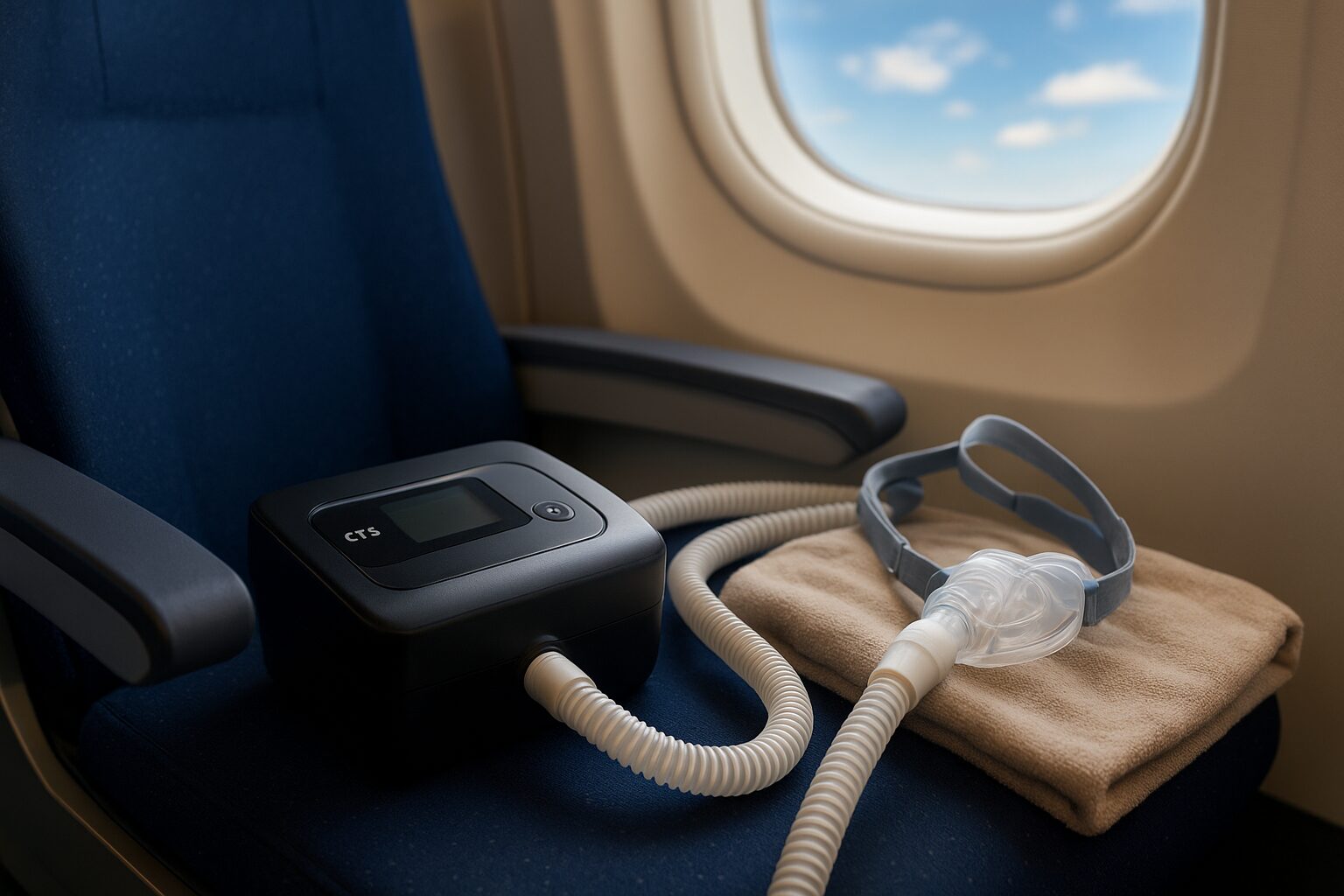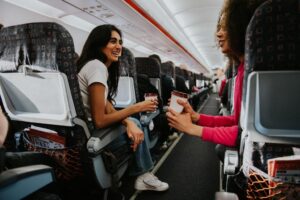If you have sleep apnea and rely on a CPAP machine, traveling—especially by air—can seem intimidating. Questions like “Does a CPAP count as a carry-on?”, “Can I use a CPAP on a plane?”, or “What are the TSA CPAP rules?” are very common for first-time flyers with a machine.
The truth is, millions of travelers worldwide successfully take their sleep apnea machines on trips every year. With a little planning and awareness of airline regulations, you can enjoy safe, restful sleep wherever your journey takes you.
In this guide, we’ll cover everything you need to know about traveling with a CPAP machine, from TSA rules and international flights to handling distilled water and using your machine on board.
Does a CPAP Count as a Carry-On?
One of the first concerns travelers have is whether a CPAP machine counts as carry-on luggage. Good news: medical devices such as CPAP, BiPAP, or travel breathing machines are considered essential medical equipment.
- A CPAP machine does not count toward your carry-on limit.
- You can bring it onboard in a separate CPAP travel bag.
- TSA and airlines typically allow these machines as an additional free item.
That said, always pack it properly in a padded CPAP travel case to protect it from damage.
CPAP and Airport Security: TSA Rules
Going through airport security with a CPAP machine is usually straightforward, but it helps to know what to expect.
- TSA may ask you to remove your CPAP machine from its bag for inspection.
- It will go through the X-ray scanner like a laptop.
- Carry a clear plastic bag if you’re concerned about contamination during screening.
- If traveling with distilled water for CPAP, remember the 3.4 oz TSA liquid limit. You can pack small bottles or buy distilled water at your destination.
Pro Tip: Some travelers carry a note from their doctor stating their need for CPAP, though it’s not required.
Can You Use a CPAP Machine on a Plane?
Yes—you can! Many airlines now allow passengers to use CPAP machines on airplanes, especially on long-haul or overnight flights.
Here’s what you need to know:
- Check ahead: Contact your airline to confirm whether in-flight CPAP use is permitted.
- Power supply: Not all seats have outlets. Bring a travel-friendly CPAP battery pack.
- International flights: Rules vary, so always confirm in advance.
- Humidifier tip: Flying can be dry. Some travelers choose to skip using water while in the air to avoid spills.
If you’ve ever asked, “Can I plug in my CPAP machine on an airplane?”—the answer depends on the carrier. Airlines often publish CPAP rules on their websites.
Checked vs. Carry-On: Where Should You Pack Your CPAP?
Another common question is whether you can put your CPAP machine in checked baggage. While it’s technically allowed, it’s strongly discouraged.
Reasons to keep it in your carry-on:
- Checked bags can be lost, delayed, or damaged.
- CPAP machines are delicate and expensive.
- You may need it during your flight or immediately after landing.
Always keep your CPAP in your carry-on bag for peace of mind.
Traveling with CPAP Distilled Water
If you’re wondering, “Can I bring distilled water for my CPAP on a plane?”—the answer is yes, but with restrictions.
- Small bottles (3.4 oz or less) can go in your carry-on.
- Larger amounts should go in checked luggage.
- Many travelers buy distilled water at their destination.
- For short trips, bottled water can work in an emergency, though distilled water is best to protect your device.
Cruise lines and hotels sometimes provide distilled water upon request.
Portable CPAP Machines: A Traveler’s Best Friend
For frequent flyers, investing in a portable CPAP machine for travel can be a game-changer. These are lighter, more compact, and often come with universal power adapters and FAA approval for in-flight use.
Benefits include:
- Easy to pack in your luggage.
- Quieter motors for better sleep in hotels or on planes.
- Battery options for camping or remote travel.
If you’ve searched “best CPAP machine for travel” or “portable CPAP for airplane use”, you’ll notice that many models are designed specifically for the needs of travelers.
International Travel with a CPAP Machine
When flying overseas, there are a few extra things to consider:
- Voltage compatibility: Make sure your CPAP is dual voltage (110V/220V) or carry a converter.
- Plug adapters: Pack the correct plug type for your destination.
- Airline policies: Check international carriers’ websites for CPAP rules.
- Customs: In rare cases, you may be asked for documentation at customs.
Planning ahead avoids surprises when you’re tired and just want to sleep.
Tips for Stress-Free CPAP Travel
To make your journey smoother, keep these practical tips in mind:
- Pack your CPAP in a padded case with extra filters and tubing.
- Carry a backup mask or headgear in case of damage.
- Keep a doctor’s note handy for peace of mind.
- Use a portable CPAP battery for flights or destinations without reliable power.
- Confirm hotel or cruise ship policies for providing distilled water.
Final Thoughts
Traveling with a CPAP machine doesn’t have to be stressful. With preparation, you can confidently handle TSA security, airline rules, distilled water, and international flights. Whether you’re exploring a new city, heading on a cruise, or flying across the globe, your sleep apnea treatment should travel with you.
By planning ahead, you’ll arrive well-rested and ready for adventure. After all, the joy of travel is about experiencing the world—not worrying about your gear.
At the end of the day, managing sleep apnea while traveling is simply part of your wellness journey. With the right mindset and planning, your CPAP becomes a travel companion—not a burden. And that’s exactly what makes every journey more rewarding with The Inspiring Insight.




